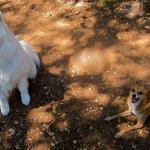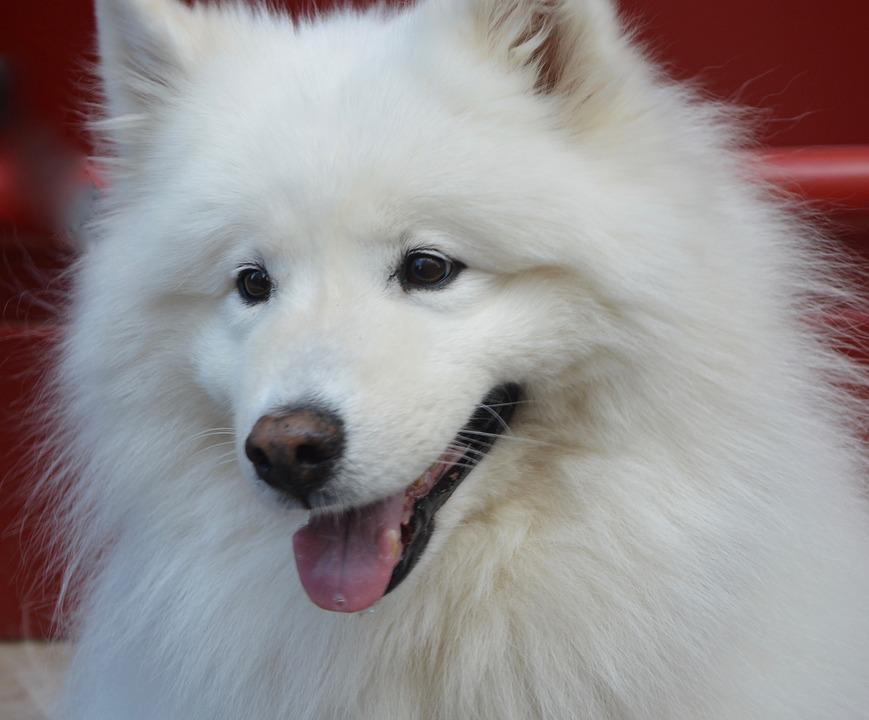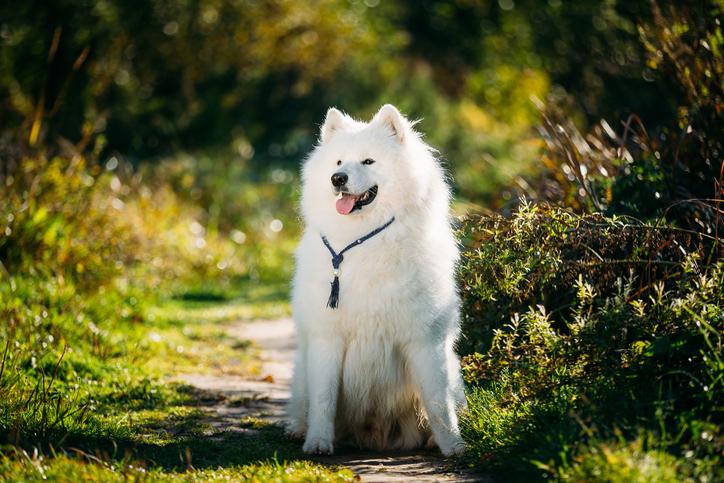Samoyed

The samoyed is one of the most popular Russian dog breeds in the world. Their white, fluffy and thick coat is really popular and appreciated by all dog lovers. However, this dog also shows a very special and sociable character, perfect for active families and children or adolescents.
Whether you are considering adopting a Samoyed or if you already have one, you will discover much more about the breed in this AnimalWised breedfile. Let's start!
- Asia
- Russia
- Group V
- 5-14
- 14-18
- 18-22
- 22-27
- 27-31
- More than 31
- 2-7
- 7-22
- 22-55
- 55-100
- 100-220
- 8-10
- 10-12
- 12-14
- 15-20
- Low
- Meidum
- High
Origin of the Samoyed
The Samoyed tribes inhabited the territory between northwest Siberia and Central Asia. These nomadic peoples relied on their dogs to herd reindeer and protect themselves from predators and to hunt. They also slept next to their precious dogs to keep warm.
The dogs in the southernmost regions were black, white, and brown, and had a more independent temperament. However, dogs from the northern regions had pure white fur and were more docile.
These dogs captivated British explorer Ernest Kilburn-Scott during his research in the Arctic in 1889. On his return to England, Kilburn-Scott brought with him a brown Samoyed puppy as a gift for his wife.
Thereafter, other explorers, as well as the Kilburn-Scott family, were commissioned to carry over these dogs to Europe. The Kilburn-Scott dogs were the basis for the current European Samoyeds.
The breed was also used to explore the other hemisphere. It is said that the female dog who led the expedition of Roald Amundsen to the South Pole was a Samoyed named Etah.
Later the breed spread throughout the world thanks to their beauty and good character. Today the Samoyed is a well-known and appreciated dog everywhere, and is mainly used as a familiar dog.
Physical characteristics of the Samoyed
The Samoyed is a medium-sized dog that looks elegant, strong, resilient and graceful. They have a characteristic expression that makes them look like they are smiling all the time! Their head is wedge-shaped and is in very good proportion to the body.
The naso-frontal depression (stop) is well defined but is not very pronounced. The nose is black but may partially lose the pigment at certain times of the year, in what is known as "winter nose". The eyes are almond shaped, oblique arrangement and dark brown. The ears are erect, small, triangular, thick and rounded at the tips.
The body is a little longer than tall, but compact and flexible. The chest is broad, deep and long, while the belly is moderately retracted. The tail is of high insertion and reaches the hock. At rest it may be hanging, but when the dog is active it is folded over the back or to the side.
Their coat is composed of two layers. The outer layer is straight, dense, rough and thick. The undercoat is short, soft and dense. Although dogs of old nomadic tribes were of different colors, the modern Samoyed is only pure white, cream or white and biscuit colored.
Samoyed temperament
The FCI defines the Samoyed as a friendly, lively and alert dog. Although their origin can make us think they are predisposed to hunting, the truth is that they don't have a strong hunting instinct. They are very friendly dogs, who usually get along well with children and other animals, provided that they have received proper socialization.
Caring for a Samoyed
A samoyed's coat should be brushed at least three times a week to prevent tangles and remove dirt. It is essential if we want them to stay clean and healthy. During periods of molting, they will need daily brushing. On the other hand, we can bathe them every 1 or 2 months when we think they are really dirty and need of a scrub.
Moderate exercise is required and it is recommended to provide them with 2 to 3 daily walks. Also prepare to spend 2 to 3 days a week performing some physical activity. Canine sports such as herding, canine freestyle and agility are also good choices for a Samoyed. The breed is well adapted to life in the countryside, but If given enough exercise and walks, they can adapt very well to life anywhere.
Apart from exercise, it is essential to offer our samoyed different exercises that will help stimulate their mind too. You can purchase toys stuffed with treats, like the kong.
Food should always coincide with the dog's lifestyle. If we provide them with regular exercise, it is important to consider adapting their diet and providing extra calories when needed. We recommend looking for quality food, according to their needs.
Training a samoyed
According to the list of smartest dogs in the world from Stanley Coren, the Samoyed possesses above average intelligence. This is not a breed that has learning difficulties, of course, provided that their development as a puppy has been positive and appropriate, taking into account animal welfare.
To achieve a balanced and sociable dog, we must consider that it will be essential to socialize them from puppyhood to learn habits and social relations. You have to conduct positive reinforcement to achieve the best results and develop a strong relationship with your dog.
Later, you can begin basic training and commands, which are essential to good communication and safety. Finally, note that when these dogs are isolated in a garden or left alone too long, they may develop behavioral problems and become destructive dogs.
Samoyed healthcare
As with practically all breeds of dogs, Samoyed is predisposed to certain pathologies, most of which are believed to be of genetic origin , according to UPEI (University of Prince Edward Island) databases. Here is an orderly list where we mention the most common Samoyed diseases, ordered from most to least frequent:
- Hip dysplasia
- Subaortic stenosis
- Atrial septal defects (ASD)
- Cataracts
- Ataxia
- Corneal dystrophy
- Deafness
- Familial renal disease
- Glaucoma
- Adrenal Sex Hormone Dermatosis
- Hemophilia
- Hypomielogenesis
- Leukodystrophies
- Osteochondrodysplasia
- Progressive retinal atrophy
- Pulmonary stenosis
- Retinal dysplasia
- Sebaceous adenitis
- Muscular Dystrophy
- Zinc- responsive dermatoses
- Microphthalmia
- Myasthenia gravis
- Shaker syndrome
- Spina bifida
As is the case with virtually all dog breeds, the Samoyed is susceptible to certain diseases, most of which are estimated to be of genetic origin, according to the databases of the University of Prince Edward Island.
To prevent and detect any health problems early, it is vital to visit the veterinarian every 6 to 12 months to conduct a comprehensive review and follow the dog's vaccination schedule. Remember to regulate internal and external deworming correctly too. If properly cared for, the life expectancy of a Samoyed is between 12 and 14 years.
Vídeo de Samoyed
Samoyed photos

































